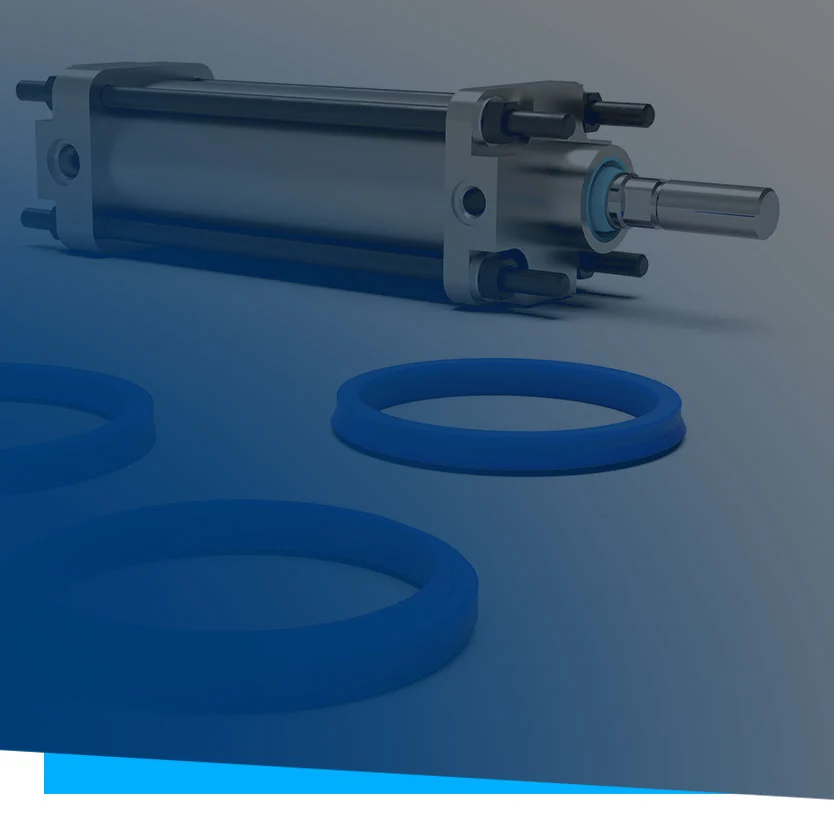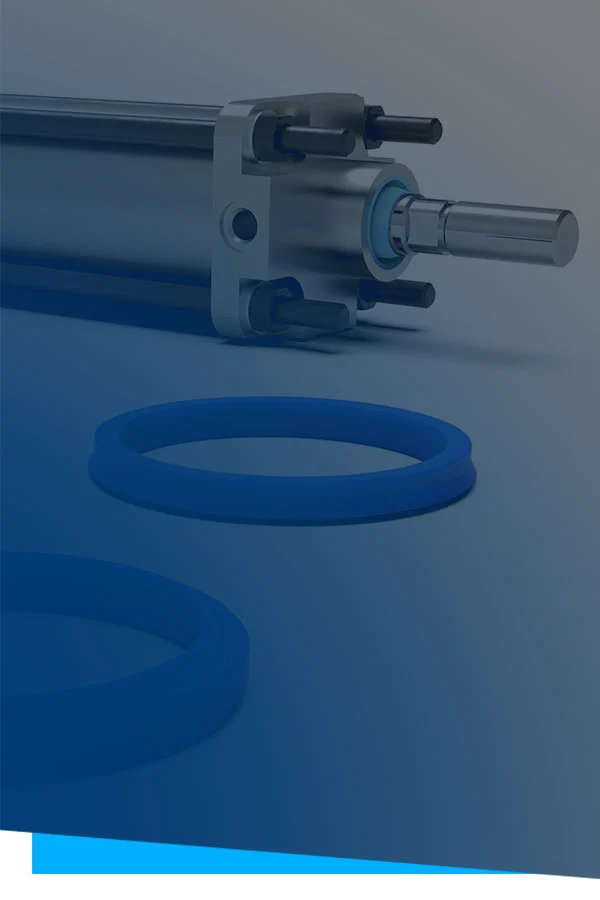


Like the Hydraulic system, Pneumatic systems require a set of special seal designs for its proper functioning. As the working fluid air or other gases are poor lubricant, care must be taken while designing the seals. In a pneumatic cylinder the major functions of pneumatic seals are to restrict the escape of air or the entrance of foreign materials in the system, maintain alignment of the rod and the piston and in certain cases enable the system to work maintenance free for long periods of time even without lubrication. In comparison to Hydraulic cylinders, Pneumatic cylinders typically demand higher operating speeds (upto 4 m/s), lower friction pneumatic seals and operate at much lower pressures (max 16 bars). Thus the friction created by the seals becomes a very important parameter while designing the seals.
Pneumatic Seals may be used for rotary and reciprocating motion. Common pneumatic seals include: rod seals, piston seals, symmetrical seals, V-Rings, wipers, wear rings, static seals, back-up rings, o-rings etc. Pneumatic seals can be single or double acting. Single acting pneumatic seals are used for one axial direction only. Double acting pneumatic seals are used in both directions for a reciprocating motion. Pneumatic seals can be made of a variety of materials: Polyurethane, Nitrile, Viton, Silicone, EPDM and PTFE.